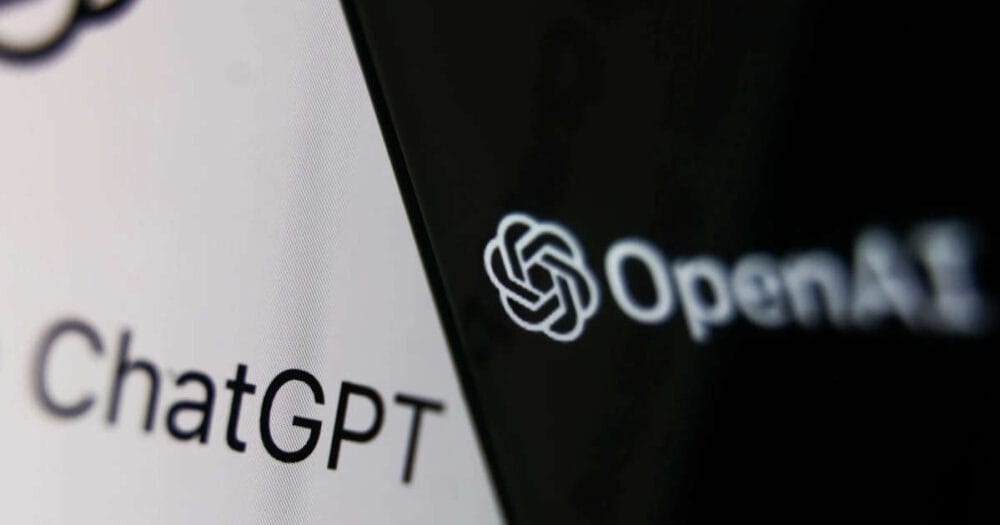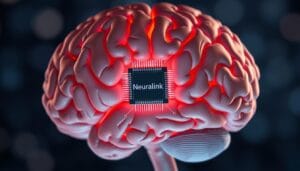Why ChatGPT Stands Out in the Rise of AI Tools
Explore the motivations and desires driving high-volume search queries in our guide on The Psychology Behind High-Volume Search Terms: What We Want & Why.

The Rise of AI Tools: and Why ‘ChatGPT’ Is Among the Top
The Rise of AI Tools: Why ‘ChatGPT‘ Is Among the Top Searches
I’ve seen a big change in how we search online. Now, we ask tools to help us think. This is the core of The Rise of AI Tools: Why ‘ChatGPT‘ Is Among the Top Searches. It’s not just a trend. It’s a big change in how we read, decide, and act.
Let’s look at the numbers. DemandSage said in September 2025 that ChatGPT has over 800 million users every week. This is up from 400 million in February 2025. Also, Datos found that 5.99% of desktop searches went to large language models in July. This is more than double from the year before.
WriterBuddy.ai used SEMrush data and found over 24 billion visits to 50 AI sites in 11 months. ChatGPT got 14.68 billion visits and has about 60% of the AI tool market.
The Rise of AI Tools: Why
In the United States, Comscore says 86 million desktop users, or 36% of online PC users, use AI tools every month. AI Assistants are the most used on both desktops and mobiles. Even Google is changing with AI Mode and AI Overviews. An Apple executive also said that Google searches via Safari went down for the first time in over two decades. Are these just tech trends, or a new way of learning?
From my own experience, I see why ChatGPT is so popular. It makes things easier. It can summarize reports, plan trips, or write emails quickly. It’s not just fast. It feels like talking to someone, which makes thinking easier. When we don’t have to think as hard, we can be more curious. That’s what Artificial Intelligence offers today: more room to explore and better ways to make decisions.
Key Takeaways
1.ChatGPT’s rapid growth reflects a broader turn toward conversational search and synthesis.
2.U.S. adoption is mainstream, with tens of millions using AI tools each month.
3.Major platforms like Google and Apple are reshaping experiences in response to AI demand.
4.People choose AI tools and technology to cut cognitive load and make faster, clearer decisions.
5.ChatGPT’s market share and visibility explain why it dominates Top searches and tech trends.
6.Understanding AI Tools and Their Applications.

I often wonder: what makes a tool feel almost human? As I use AI tools daily, I see how they clear my mind. These tech trends really change how we work.
And yes, there’s a cost behind the curtain. Data centers use a lot of energy and water, as the BBC analysis shows. I feel the tension between AI’s promise and our responsibility to use it right. See article: AI companions for the lonely
What are AI Tools?
AI tools are like assistants that help with text, images, audio, and video. They’re like quiet co-editors, good at patterns and fast at drafts. They use Machine Learning and Natural Language Processing to offer options.
Tools like OpenAI’s ChatGPT and Google’s Gemini aim to make our work easier. On my laptop, they help with research and planning. On my phone, they spark ideas for design and social posts when I need them.
Key Features of AI Tools
Conversational guidance that lowers cognitive load and keeps me in flow.
Rapid summarization of long articles, reports, and threads.
First-draft generation for emails, briefs, captions, and code snippets.
“What-if” exploration to test choices before I commit.
These features are at the heart of Artificial Intelligence for everyday life. When I’m stuck, Natural Language Processing helps me find clarity. When I’m busy, Machine Learning helps me make faster decisions.
Common Uses in Different Industries
In marketing, AI tools improve copy and timing, boosting quality. Retail teams use them to find better products. Travel planners create itineraries in minutes. Beauty brands offer tailored advice based on skin profiles. Enterprise leaders use analytics to make data-driven decisions.
At home, AI tools are humble yet helpful. They suggest meal ideas, wardrobe picks, and fix bugs. These tech trends save us time, letting us focus on what matters most.
Use Case
1.Primary Benefit Core Capability Where It Shines
2.Content Drafting Faster first drafts Natural Language Processing Marketing, communications, education
3.Product Discovery Better Recommendations Machine Learning Retail, marketplaces
4.Itinerary Planning Time saved AI tools orchestration Travel and hospitality
5.Data Insights Faster Decisions Artificial Intelligence analytics Enterprise operations
I often ask myself: if a system handles the hard work, what new space opens up in my day? With Machine Learning and Natural Language Processing, I have more quiet moments and make better decisions.
The Popularity of ChatGPT Among AI Tools
What draws millions back each day? I see a pattern when people use AI tools. They want speed, clarity, and a sense that the machine understands them.
ChatGPT stands out. It’s why ‘chatgpt’ is a top search in many moments of work and life.
It’s not just buzz. Real usage shows its popularity. Traffic, time on site, and repeat visits make it a top search.
Users save time and mental load. This combination is hard to resist.
Overview of ChatGPT
ChatGPT started as a conversational model. It became a daily habit. People use it like a notepad, tutor, and brainstorming partner.
It answers fast, adapts to tone, and keeps context. This makes it a central AI tool.
Independent trackers show massive reach and engagement. For more on audience patterns, see ChatGPT users data.
Why Users Prefer ChatGPT
I see the same ritual in my day. I ask a hard question and get a clear draft in seconds. No maze of tabs or hunting for sources.
This is why ‘chatgpt’ is a top search. It shortens the path from idea to action.
ChatGPT’s Unique Selling Points
Four traits stand out. First, conversational depth—follow-ups feel human. Second, broad general knowledge—usable across topics. Third, rapid iteration—answers refine fast. Fourth, momentum—an ecosystem that keeps improving features and access.
Even with Google Gemini, Microsoft Copilot, Meta AI, and DeepSeek in the news, ChatGPT remains the benchmark. Users compare everything to it, keeping it a top search.
What Users Experience Why It Matters Impact on Top searches Speed
Answers in seconds with concise synthesis Reduces cognitive load and decision fatigue Drives repeat queries for quick wins. Depth -Context-aware, multi-turn dialogue Supports complex tasks and refining drafts Encourages longer sessions and return visits.
Range -General knowledge across domains One tool for research, writing, and planning Broad relevance boosts AI tools discoverability. Iteration – Rapid follow-ups and rewrites Faster prototypes and learning loops Higher engagement keeps it in Top searches. Momentum – Growing ecosystem and integrations Seamless fit into daily workflows Word-of-mouth sustains visibility.
How ChatGPT Works
I find ChatGPT fascinating. It listens to what I say and answers in a way I can understand. This magic happens because of Artificial Intelligence that makes talking to it feel real. When I ask a question, it gives me a draft. Then, we work together to make it better. It’s a simple process, but it feels like we’re having a deep conversation.
The Underlying Technology
Machine Learning is what makes ChatGPT work. It uses a large language model to guess the next word. This model learns from lots of text, so it can quickly give me summaries, code hints, and first drafts.
When I give it a clear question, it answers quickly. I see it as a partner, not just a machine. It’s important to remember that I always check its answers. For more on this, check out this article on LLM adoption and cautions.

Natural Language Processing Explained
Natural Language Processing helps ChatGPT understand what I really mean. It keeps track of our conversation, so it can respond naturally. I can change my tone or ask different questions, and it adapts.
This technology is also used in chatbots on apps and devices. It makes long text easier to understand. While I always double-check the facts, the first draft saves me a lot of time.
Training and Data Input
ChatGPT starts with lots of data and then gets fine-tuned for conversations. The prompts I give it guide its answers. Whether I need a summary or a friendly response, it adjusts.
Artificial Intelligence learns from examples, but it’s not perfect. I always ask, read, and refine its answers. This process works for both personal notes and team projects. It also helps me ask better questions.
Real-World Applications of ChatGPT
I watch the day fill with pings and pings again, and I ask: how do we turn noise into meaning? In these moments, AI tools feel less like gadgets and more like companions. With ChatGPT, Natural Language Processing bridges intent and action, and I sense the pull of new Tech trends shaping our habits, hour by hour.
Use in Customer Service
When a support inbox overflows, I lean on ChatGPT to draft first replies, summarize long tickets, and surface next steps. It does the heavy lift in minutes, then a human adds the final touch. These AI tools reduce wait times and stress, yet keep empathy in the loop.
Across teams at Amazon, Shopify, and Salesforce integrations, agents feed in context and get a clear first pass. Natural Language Processing turns scattered notes into a clean thread, so customers feel heard. I see this and think: speed can be kind.
ChatGPT in Education
In study mode, I ask for a plan, a summary, or a hint on code. The reply is fast, but I verify. That balance matters. With ChatGPT as a study partner, low-risk help becomes a path to quicker understanding.
Mobile on the bus, desktop at the desk—each space shapes the work. I notice AI tools shine for outlines, flashcards, and gentle nudges toward the hard parts. For a broader view of momentum, I often revisit a lens on Tech trends that track real progress and limits.

Enhancing Creative Writing with AI
When ideas feel stuck, I ask for five angles, a scene sketch, or a shift in tone. ChatGPT helps me play with voice without losing my voice. Natural Language Processing becomes a mirror, reflecting mood and rhythm until a draft breathes.
On mobile, I riff on images, reels, and short narratives; on desktop, I expand a beat into a chapter. These AI tools compress research for travel plans, restaurant picks, or product comparisons into minutes, freeing space for story. I see this pattern across current Tech trends, and it feels like clearing a desk before the real work begins.
In marketing sprints, keyword cues from trusted platforms guide the next move, while conversational prompts spark headlines and hooks.
As investment and adoption grow across the United States, I keep one steady principle: keep the human at the center, and let the machine widen the path. For practical SEO and content insights aligned with this shift, I look to an ultimate guide to SEO for 2025 that maps how creation and discovery converge.
The Impact of ChatGPT on Businesses
I’ve seen leaders make quick, smart decisions with just one prompt. When data grows too fast, we turn to Artificial Intelligence for help. It sorts and guides us.
Across boardrooms, Tech trends are changing how we work. Teams use Machine Learning and human insight together. Chatbot development is becoming a regular part of work.
trusted AI updates show a big change: better search, quicker answers, and voice-first work. This isn’t just a trend; it’s a sign of new workflows.
Improving Efficiency and Productivity
Legal teams now review documents much faster thanks to AI summaries. Product managers can draft specs quickly, then focus on tough decisions. Engineers get code snippets, making their work easier.
1.Condense long docs into brief, accurate notes.
2.Draft emails, FAQs, and proposals that are easy to refine.
3.Offer decision support with clear pros and cons.
4.Artificial Intelligence takes over routine tasks, freeing people to focus on important decisions. This is where 5.value grows, and Machine Learning feels most human.
Cost-Effectiveness for Companies
Savings are measured in more than just dollars. Chatbots handle simple tasks, while experts tackle complex ones. Marketing also improves, with better lead quality and faster responses.
Trust drives budget decisions. Teams focus on official sources and verified news. This changes how brands share information and how fast they convert customers.
Case Studies of Successful Implementation
In beauty and retail, AI helps find products faster and more personally. Sephora’s use of expert content shows the power of authority. In travel, AI helps create itineraries quickly, letting agents focus on details.
OpenAI’s growth and demand for productivity features show its staying power. As Tech trends evolve, Machine Learning, trust, and workflow design move together.
Comparing ChatGPT with Other AI Tools
When comparing AI tools, what matters most? Is it speed, trust, or the relief of getting a clear answer? In a world shaped by Artificial Intelligence, these choices feel personal. ChatGPT is a top search because it matches how we think and ask questions.
I try out tools like Microsoft Copilot, Google Gemini, Meta AI, Character.ai, Perplexity AI, and DeepSeek. They all aim to help. But each tool influences my work and thought differently. I seek the tool that simplifies my work, with fewer steps and less effort.
Similarities and Differences
Across the field, I see common traits: conversational interfaces and quick answers. These tools are designed to make our lives easier. We judge them based on tone, clarity, and how well they answer our questions.
Despite similarities, the differences are clear. ChatGPT leads with about 60% of the market, attracting billions of visits. Other tools like Character.ai, Google Bard, and Gemini have smaller shares. DeepSeek shows promise with its multilingual capabilities. For a detailed comparison, check out this article on leading research tools.
Advantages Over Competitors
ChatGPT often provides a solid first impression. Sessions can last up to half an hour, showing its effectiveness. A large weekly audience returns, and most access it on their phones. This shows its appeal in daily life.
Google’s integration of AI Overviews and AI Mode into search is a sign of change. It suggests a blend of answers and discovery. I use ChatGPT for initial thoughts, then check links for more information. This approach is valuable.
User Preferences
Most of us prefer fewer steps and clear reasoning. ChatGPT is popular because it simplifies our work. It reduces the need to juggle links and provides a trusted starting point.
In the world of AI tools, I choose the one that makes my life easier. ChatGPT, Gemini, Perplexity, and others are more than apps. They are ways of thinking. Our choice reflects what kind of support we need.
Challenges and Limitations of ChatGPT
I use ChatGPT every day, but I stay humble. It’s a tool, not a truth machine. It helps me think and draft, but I question where judgment comes from.
One quiet lesson stands out. Large models are great at synthesis, not transactions. I use them for ideas and summaries, then check facts myself. This mix feels human.
Common Misconceptions
Some think ChatGPT gives error-free answers. But it can hallucinate. So, I verify claims before acting. I see its outputs as a first draft, not final.
Another myth is that it replaces search. It actually complements it. It frames options and speeds up thinking. Then, I check details elsewhere, when it matters.
Ethical Considerations
Models often echo official pages and rankings. This can shape who gets seen and who stays quiet. I wonder whose voice is amplified and whose is lost.
Adoption is rising, with big economic gains and risks. One analysis notes huge gains but warns of misuse. I slow down, weigh sources, and question easy answers.
Handling Privacy Concerns
What do I share, and what stays private? This boundary is key. I avoid sharing sensitive data with AI. Simple rules help: redact names and strip identifiers.
As AI tools spread, being cautious is a daily habit. I share only what I can defend if leaked. I keep audit trails and document sources.
So, I ask better questions and verify with care. I respect what should not be shared. And I keep humans in the loop—because discernment, not speed, is what keeps us steady.
Future Trends in AI Tools
I look at the future of Tech trends with a mix of awe and caution. We’re learning to share our attention with Artificial Intelligence, not give it away. I wonder: what kind of help do we want, and what kind of humans do we remain when the help gets faster?
Emerging Features in AI Technology
Search is changing before our eyes. New conversational modes like AI Overviews and AI Mode turn queries into guided chats. Systems like DeepSeek show how natural language can stretch across borders.
On desktop, AI tools draft, analyze, and schedule in one flow. On mobile, creative work takes center stage—design, short video, and marketing tasks feel fluid and playful. Machine Learning powers these small moments that move a day forward.
Predictions for AI Tool Usage
People are using assistants at scale—tens of millions each month on desktop and on mobile—so the habits are sticking. I notice the shift in my own routine: fewer clicks, more intent. This mirrors broader momentum in Artificial Intelligence, with OpenAI valued near the top tier and Nvidia racing to meet demand.
Even the headlines point to a larger wave. IonQ hits new quantum milestones, Broadcom advances chip packaging, and carbon capture expands as industry seeks cleaner paths. I track these global updates as signals that the surface is calm while the current runs deep.
The Role of AI in Daily Life
In my day, AI tools summarize articles, plan trips, and refine messages so I can think about tone and intent. They compare products, weigh options, and offer drafts that I can shape. It feels like a dialogue with attention itself.
The rhythm is simple: I set direction; the system offers paths. Machine Learning keeps the suggestions timely; Artificial Intelligence keeps them human-facing. In this hybrid dance, the goal is clarity, not control—and the best Tech trends remind me to stay curious, present, and kind with the time I gain.
User Experience with ChatGPT
I start using ChatGPT like a notebook, ready to brainstorm. It feels natural to ask, pause, and try again. Now, AI tools fit into our daily lives smoothly. They understand our intent, not just our words.
When I ask a question, I imagine a helpful editor. I share context and ask for a clear next step. Short questions are good, but follow-ups are where the magic happens.
Crafting Effective Prompts
I start with a simple goal, audience, and tone. Then, I add more details and constraints. I ask for structure and invite edits.
1.State the task and outcome in one sentence.
2.Add context: role, channel, and length.
3.Iterate: “Revise,” “expand,” or “compare.”
4.Cross-check facts against trusted sources.
This way, AI tools become a partner. Natural Language Processing handles the details, while I guide. The prompt becomes a conversation, not a command.
The Learning Curve for New Users
The learning curve is gentle. I moved from keyword search to a dialogue. I ask for drafts, summaries, or itineraries, then refine them.
Elon Musk: ‘There Will Come a Point Where No Job Is Needed. AI Will Be Able to Do Everything.’
AEI.ORG Scholars
Feedback and Testimonials
Professionals see big benefits. Legal tech consultants use it for drafts. Strategists plan trips and routines, then adjust them. Marketers get clearer briefs and better referrals.
People use it on desktop for deep work and mobile for quick ideas. Natural Language Processing keeps the conversation flowing. This steady loop helps me stay focused and saves time.
Community and Support for ChatGPT Users
I turn to people when the tools feel vast. In a sea of Artificial Intelligence, the most trusted map is a human voice. I see threads, notes, and gentle nudges that make tough tasks feel easy. Isn’t that the quiet power behind today’s Tech trends?
Across platforms, peers swap prompt ideas and flag what works. I watch Chatbot development unfold in public, one shared example at a time. With the right AI tools, progress feels like a shared journey, not a solo race.
Online Resources and Forums
I often start with open communities because they move fast. On Reddit and Discord, people trade workflows for research, marketing, and design. GitHub hosts snippets that shave hours off a task. YouTube and podcasts turn dense ideas into plain talk.
Official Support Channels
When I need clarity, I look to the source. OpenAI’s help content tracks new features and policy shifts. Release notes explain changes before they surprise me. Clear terms matter when teams scale. OpenAI Forum
Product-led guides pair well with quick tutorials. I compare notes, then update my workflow. It keeps my use of AI tools steady under deadline pressure.
Conclusion: The Future of ChatGPT and AI Tools
I look back and see a clear trend. The rise of AI tools, like ChatGPT, is not a surprise. It’s a movement we can feel. ChatGPT is leading with about 60% of the market, 14.68 billion visits, and over 800 million users weekly.
In the United States, AI assistants are used by tens of millions on both desktops and mobiles. This mirrors our lives—work on the desk and ideas on the go. Artificial Intelligence doesn’t replace search; it changes how we search, with AI Overviews and AI Mode adding context.
Summary of Key Points
People use large language models to reduce mental effort. They help with summaries, drafts, code snippets, and plans. Then, we verify them, just like any careful reader would.
This habit feels both human and wise. We see strong mobile engagement, rising desktop use, and steady growth in AI tool searches. The story is not just hype; it’s about daily practice meeting useful design.
The Continued Evolution of AI
Change is happening fast and for real. Comscore shows a 16% rise in U.S. search activity. New players like DeepSeek are pushing language and speed boundaries.
OpenAI is scaling models and infrastructure, while Nvidia’s gains signal deeper compute stacks. The future leans toward hybrid work. Machines draft and distill, while we decide, define, and set the bar for meaning. This is where AI feels most human—right beside us.
Encouraging Adoption and Innovation
I follow a simple plan: write clear prompts, iterate in small steps, and watch for privacy and trust. For teams, align content with what models value—clarity, authority, and relevance. For individuals, let AI tools do the heavy lifting while you guide the way.
The path ahead is shared. The rise of AI tools, like ChatGPT, hints at a future where searches lead to deeper insight, not just noise. We will pair speed with care, building something we can be proud of.
FAQ
Why is “ChatGPT” among the top searches today?
Today, we’re asking the web different questions. Large language models now chat with us, not just list links. This saves us time and mental effort. Reports from DemandSage and Comscore show huge usage—hundreds of millions weekly.
People want fast answers, planning help, and gentle guidance. It feels like a new way to think and decide.
What are AI tools?
AI tools are like digital assistants that listen and reply in simple English. They include chatbots like ChatGPT, tools for creating text, images, audio, and video, and planning helpers on our phones and laptops. They help us organize our thoughts and move forward.
What key features define modern AI tools?
Modern AI tools have conversational interfaces that make things easier. They quickly summarize long content and create first drafts for emails, code, and plans. They also let us test ideas safely.
On desktops, they help with deeper tasks. On mobiles, they spark creativity for design, images, video, and marketing.
How are AI tools used across industries?
Marketing teams use AI to find better leads. Retail uses it for product discovery. Travel planning relies on it for itineraries. Beauty gets personalized recommendations.
Enterprises use it to make decisions from data, turning big reports into action.
What is ChatGPT in the landscape of AI tools?
ChatGPT is a top AI assistant that millions turn to first. WriterBuddy.ai says it’s the most visited AI site, with long sessions and strong mobile use. People compare it to other assistants like Google Gemini and Microsoft Copilot because it feels fluent and helpful.
Why do users prefer ChatGPT over browsing links?
Users prefer ChatGPT because it cuts through clutter. Instead of juggling tabs, we ask a question and get a summary we can shape. It’s great for summaries, first drafts, code snippets, and quick plans.
We verify important details, but it saves brain strain.
What are ChatGPT’s unique selling points?
ChatGPT stands out for its deep conversations, broad knowledge, and fast iteration. It has a vibrant ecosystem and strong engagement—average sessions are around half an hour. It adapts quickly, meeting us where we work and imagine.
What technology underlies ChatGPT?
ChatGPT runs on large language models—machine learning systems trained to predict and generate human-like text. They excel at summarizing, drafting, and holding context over a dialogue, making the experience feel natural and supportive.
How does Natural Language Processing (NLP) shape the experience?
NLP helps the model understand intent, nuance, and rhythm. It connects our words to likely meanings and translates that into coherent replies. The effect is subtle: we speak plainly, it responds clearly, and the loop deepens understanding.
How are models trained, and what do prompts do?
Models learn from large text datasets and are tuned for helpful dialogue. Prompts are our steering wheel—each question narrows the path, each follow-up sharpens the focus. Iteration is the craft: ask, refine, verify.
How do customer service teams use ChatGPT?
Customer service teams use ChatGPT to draft replies, summarize tickets, and prepare first responses. Agents stay human at the final mile—reviewing, editing, and adding context—while the assistant clears the underbrush of repetitive work.
How does ChatGPT support education?
ChatGPT outlines study plans, explains readings, and offers coding hints. It’s a study partner for low-risk tasks, speeding comprehension while reminding us to check facts and think critically.
Can ChatGPT enhance creative writing?
Yes. ChatGPT sparks ideas, shapes outlines, and experiments with tone. We keep the voice; it provides momentum—like a patient editor who never tires of another draft.
How does ChatGPT improve business efficiency?
ChatGPT compresses hours into minutes. Summaries replace slogging through documents. First drafts shift teams into review mode. Decision support turns data into choices we can act on.
Is ChatGPT cost-effective for companies?
For “low-risk” tasks—drafting, summarizing, basic code—it frees specialists for higher-value work. Marketing also benefits when LLM referrals bring more qualified prospects, nudging conversion rates upward.
Are there examples of successful implementation?
Sectors like travel planning, retail discovery, and beauty recommendations show faster customer journeys. Established media and official sources often surface in AI answers, guiding brands toward trusted content signals.
How does ChatGPT compare with Google Gemini, Microsoft Copilot, Meta AI, Character.ai, Perplexity, and DeepSeek?
All share conversational NLP and cross-platform reach. ChatGPT leads in traffic and engagement, while others bring strengths—multilingual depth, search fusion, or niche communities. Users often try several before settling into a daily habit.
What advantages does ChatGPT hold?
ChatGPT has market momentum, long sessions, and a broad knowledge base. It handles iterative Q&A with ease, keeping context as we move from idea to draft to decision.
What do users ultimately prefer?
Users prefer less cognitive load and fewer clicks. They want synthesis first, links later—conversation that clarifies, then sources to confirm.
What are common misconceptions about ChatGPT?
Some think it replaces search entirely or never makes mistakes. In reality, we live in a hybrid world—AI for synthesis and drafting, traditional search for transactions and verification.
What ethical issues should we consider?
We should consider visibility and power. Models tend to favor official sites, press releases, established media, and recognized rankings. That can reinforce existing hierarchies unless we stay mindful and diversify sources.
How should I handle privacy with AI assistants?
Share carefully. Avoid sensitive data unless you understand the policies. Treat prompts like emails—use discretion, keep records, verify outputs before acting.
What features are emerging in AI technology?
Expect stronger multilingual understanding, tighter search integration, and deeper workflow support. Hardware leaps from companies like Nvidia will keep pushing the ceiling higher.
How will AI continue to evolve?
AI will get better at understanding many languages, integrating with search, and supporting deeper workflows. Hardware leaps from companies like Nvidia will keep pushing the ceiling higher.
How can we encourage adoption and innovation responsibly?
Invite people in with simple prompts and honest guardrails. Verify important facts, respect privacy, and design with compassion. Let the machine draft and distill—then let us decide what matters.







